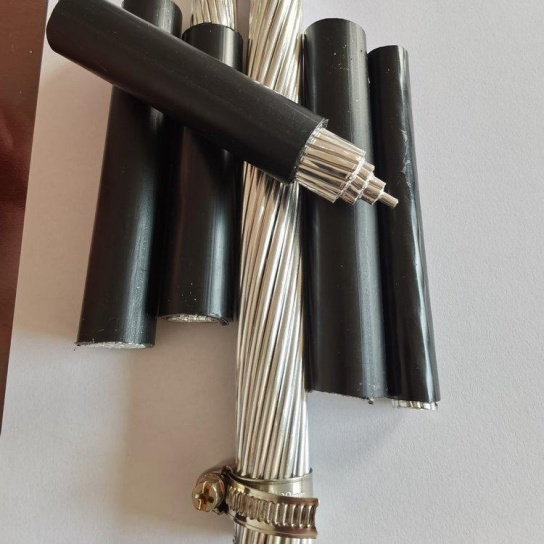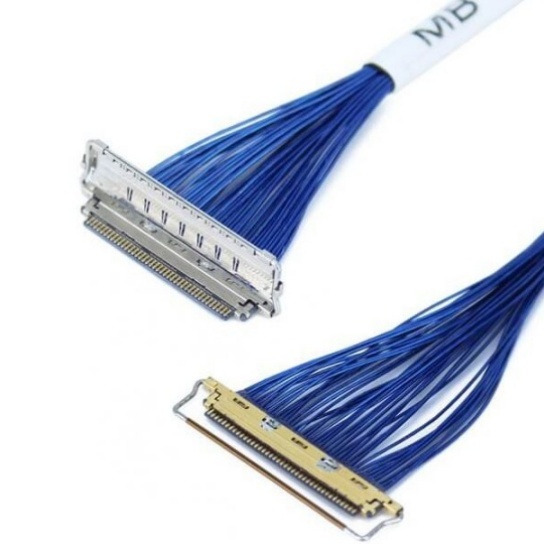What Are Carbon Fiber Aviation Cables
- Defining Carbon Fiber Aviation Cables
Carbon fiber aviation cables are specialized electrical or data transmission cables that integrate carbon fiber materials into their construction. Unlike traditional metal-based cables, these leverage carbon fiber’s unique properties to achieve exceptional performance in three key areas:
Ultra-low weight
High mechanical strength
Enhanced thermal and electrical conductivity (when hybridized with metals).
They are designed to meet rigorous aerospace standards such as MIL-DTL-27500 and SAE AS50881.
2. Composition and Design
Carbon fiber cables are engineered through innovative material combinations and structural designs:
Core Components:
Carbon Fiber Conductors:
Pure Carbon Fiber: Used for structural support or as a non-conductive reinforcement.
Metal-Coated Carbon Fiber: Carbon fibers plated with copper, silver, or nickel to enable electrical conductivity while retaining lightweight properties.
Example: Copper-coated carbon fiber achieves 80% of copper’s conductivity at 30% of its weight.
Hybrid Conductors:
Carbon fiber strands intertwined with aluminum or copper wires to balance conductivity and strength.
Insulation and Jacketing:
Polyimide Films: Thin, heat-resistant layers for high-temperature zones (e.g., engine bays).
PTFE (Teflon): For chemical resistance and flexibility.
Carbon Fiber Reinforced Polymer (CFRP) Sheathing: Adds crush resistance and EMI shielding.
Structural Innovations:
Multi-Axial Weaving: Carbon fibers woven into braided sleeves to withstand torsion and vibration.
Coaxial Integration: Carbon fiber layers act as both structural support and EMI shields in data cables.
3. Key Advantages Over Traditional Cables
A. Weight Reduction
Carbon fiber cables weigh 50–70% less than equivalent copper or aluminum cables.
Example: Replacing 100 kg of copper wiring with carbon fiber hybrids reduces aircraft weight by 50–70 kg, saving ~150,000 liters of fuel annually per commercial jet.
B. High Strength and Durability
Tensile Strength: Carbon fiber boasts 5x the strength of steel by weight.
Fatigue Resistance: Withstands vibrations in rotorcraft and turbulent conditions without degradation.
Corrosion Immunity: Impervious to moisture, salt, and chemicals, ideal for marine-based aircraft.
C. Thermal Management
Heat Dissipation: Carbon fiber’s thermal conductivity (5–100 W/m·K) prevents overheating in high-power systems.
Fire Resistance: Self-extinguishing and compliant with FAA flame-smoke-toxicity (FST) standards.
D. Electrical Performance
Low Resistance: Metal-coated carbon fiber minimizes resistive losses in power transmission.
EMI Shielding: Braided carbon fiber layers block interference in avionics and radar systems.
4. Applications in Modern Aviation
Carbon fiber cables are transforming critical aerospace systems:
A. Electric and Hybrid-Electric Aircraft
Power Distribution: Efficiently transmit high currents in electric propulsion systems (e.g., NASA X-57 Maxwell).
Battery Interconnects: Reduce weight in lithium-ion battery packs for eVTOLs like Joby Aviation.
B. Fly-by-Wire and Avionics
Signal Transmission: Deliver low-loss, high-speed data for flight control systems (e.g., Boeing 787).
Sensors and Actuators: Lightweight wiring for AI-driven autonomous systems in UAVs.
C. Structural Health Monitoring (SHM)
Embedded Carbon Fiber Sensors: Monitor strain, temperature, and damage in real time.
D. Military and Space Applications
Stealth Aircraft: Radar-absorbent carbon fiber cables reduce detectability.
Satellites and Rockets: Minimize launch weight while surviving extreme thermal cycles.
5. Challenges and Solutions
A. Conductivity Limitations
Challenge: Pure carbon fiber has lower conductivity than metals.
Solution: Metal coatings (e.g., silver nanoparticles) or hybrid conductor designs.
B. Manufacturing Complexity
Challenge: High cost of carbon fiber production and precision plating.
Solution: Automated weaving and 3D printing to scale production.
C. Connector Compatibility
Challenge: Traditional connectors may not suit carbon fiber’s stiffness.
Solution: Customized CFRP connectors with integrated stress relief.
6. Future Trends
A. Smart Carbon Fiber Cables
Integration of fiber-optic sensors for real-time health monitoring.
B. Superconducting Hybrids
Carbon fiber combined with high-temperature superconductors (e.g., YBCO) for zero-loss power transmission.
C. Recyclable Designs
Thermoplastic carbon fiber composites for eco-friendly end-of-life recycling.
Case Study: Carbon Fiber Cables in the Airbus A350
Airbus incorporates carbon fiber-reinforced cables in the A350 to:
Reduce wiring weight by 40% in the wings and fuselage.
Enhance EMI shielding for the aircraft’s Ka-band satellite communication system.
Extend maintenance intervals due to corrosion-resistant properties.






